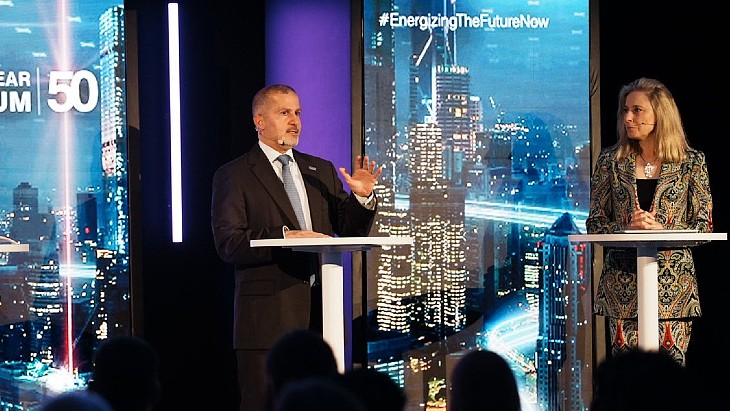In October last year, Last Energy announced plans for four microreactor power plants at the Llynfi site, for which it obtained site control that month. The Llynfi power station - a 120 MW coal plant - operated between 1951 and 1977. Following decommissioning in 1977, the 14-acre site has remained vacant. Last Energy's project is officially named Prosiect Egni Glan Llynfi and is being developed by Last Energy UK Limited.
In January this year, Last Energy became the first microreactor developer to formally enter nuclear site licensing for its project.
The UK's nuclear regulators - the Office for Nuclear Regulation (ONR), the Environment Agency, and Natural Resources Wales (NRW) - have now completed their Preliminary Design Review (PDR) of the PWR-20.
Their joint summary report confirms successful completion of the review in June 2025. Completion of the process followed more than a year of early engagement with the regulators and five months of PDR-specific review, which included design workshops and technical submissions across selected topic areas.
According to the regulators' summary report, Last Energy's target to receive a site licence decision by December 2027 is achievable - contingent on the company delivering its submissions to the standard and schedule agreed in the Preliminary Design Review. The Preliminary Design Review process covered three topic areas: organisational plans and arrangements, environment and decommissioning, and safety analysis process and maturity, and included a review of Last Energy's fully-passive, walk-away-safe design approach.
"The Preliminary Design Review has built initial confidence that Last Energy understands regulatory expectations in those three areas and is planning to address them as the PWR-20 design matures and is subject to site-specific design assessment for deployment at their identified South Wales site," ONR said.
Last Energy said completion of the Preliminary Design Review "marks a significant development in Last Energy's efforts to deploy the first commercial microreactor in the UK" and "equips Last Energy with tailored regulatory guidance as it moves into the next phase of regulatory assessment of Last Energy's design, safety, security, and environmental cases".
"As the first micronuclear developer to complete a Preliminary Design Review, we applaud the UK's nuclear regulators for establishing a clear, flexible and direct regulatory pathway for micro-nuclear technologies to engage in nuclear licensing and environmental permitting," said Last Energy UK CEO Michael Jenner. "Unlocking nuclear power at scale is essential to decarbonising the industrial economy and driving economic growth across the UK. Completing our PDR has provided essential guidance to efficiently undertake and complete licensing processes, positioning Last Energy to deliver the UK's first commercial microreactor."
Last Energy is a spin-off of the Energy Impact Center, a research institute devoted to accelerating the clean energy transition through innovation. Its reactor technology is based on a pressurised water reactor with a capacity of 20 MWe or 80 MWt. Power plant modules would be built off-site and assembled in modules.
A Last Energy plant, referred to as the PWR-20, is comprised of a few dozen modules. The PWR-20 is designed to be fabricated, transported, and assembled within 24 months, and is sized to serve private industrial customers. Under its development model, Last Energy owns and operates its plug-and-play power plant on the customer's site, bypassing the decade-long development timelines of electric transmission grid upgrade requirements.
In October last year, Last Energy announced plans for four microreactor power plants at the Llynfi site, for which it obtained site control that month. In December, the company received a letter of intent from the USA's Export-Import Bank for USD103.7 million debt financing relating to the Llynfi project. In In January this year, Last Energy accepted a grid connection offer from National Grid Electricity Distribution for 22 MW of export capacity.

_40401.jpg)



_18570.jpg)
_18938.jpg)
_33584.jpg)
_82983.jpg)





